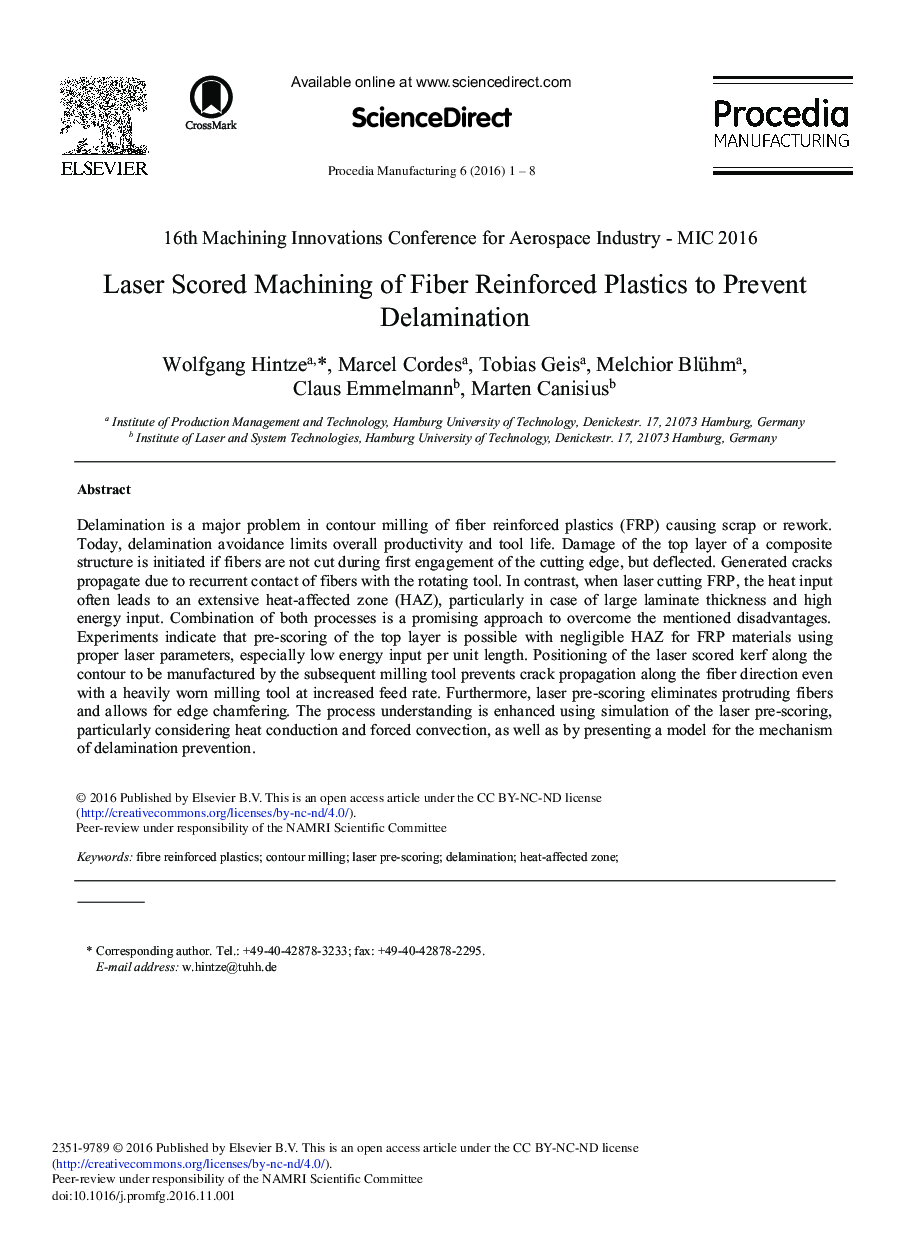| Article ID | Journal | Published Year | Pages | File Type |
|---|---|---|---|---|
| 5129103 | Procedia Manufacturing | 2016 | 8 Pages |
Delamination is a major problem in contour milling of fiber reinforced plastics (FRP) causing scrap or rework. Today, delamination avoidance limits overall productivity and tool life. Damage of the top layer of a composite structure is initiated if fibers are not cut during first engagement of the cutting edge, but deflected. Generated cracks propagate due to recurrent contact of fibers with the rotating tool. In contrast, when laser cutting FRP, the heat input often leads to an extensive heat-affected zone (HAZ), particularly in case of large laminate thickness and high energy input. Combination of both processes is a promising approach to overcome the mentioned disadvantages. Experiments indicate that pre-scoring of the top layer is possible with negligible HAZ for FRP materials using proper laser parameters, especially low energy input per unit length. Positioning of the laser scored kerf along the contour to be manufactured by the subsequent milling tool prevents crack propagation along the fiber direction even with a heavily worn milling tool at increased feed rate. Furthermore, laser pre-scoring eliminates protruding fibers and allows for edge chamfering. The process understanding is enhanced using simulation of the laser pre-scoring, particularly considering heat conduction and forced convection, as well as by presenting a model for the mechanism of delamination prevention.
